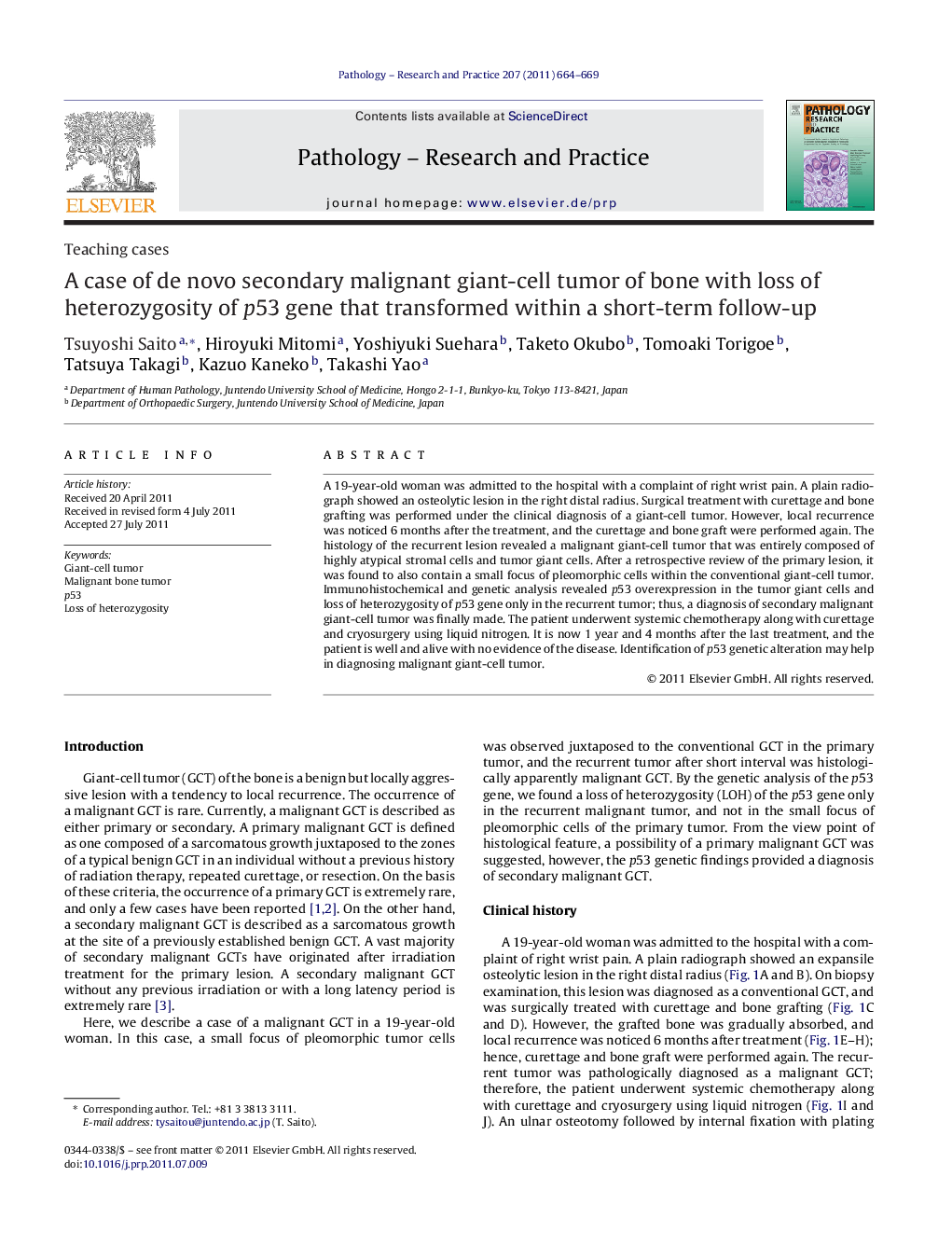| Article ID | Journal | Published Year | Pages | File Type |
|---|---|---|---|---|
| 2156119 | Pathology - Research and Practice | 2011 | 6 Pages |
Abstract
A 19-year-old woman was admitted to the hospital with a complaint of right wrist pain. A plain radiograph showed an osteolytic lesion in the right distal radius. Surgical treatment with curettage and bone grafting was performed under the clinical diagnosis of a giant-cell tumor. However, local recurrence was noticed 6 months after the treatment, and the curettage and bone graft were performed again. The histology of the recurrent lesion revealed a malignant giant-cell tumor that was entirely composed of highly atypical stromal cells and tumor giant cells. After a retrospective review of the primary lesion, it was found to also contain a small focus of pleomorphic cells within the conventional giant-cell tumor. Immunohistochemical and genetic analysis revealed p53 overexpression in the tumor giant cells and loss of heterozygosity of p53 gene only in the recurrent tumor; thus, a diagnosis of secondary malignant giant-cell tumor was finally made. The patient underwent systemic chemotherapy along with curettage and cryosurgery using liquid nitrogen. It is now 1 year and 4 months after the last treatment, and the patient is well and alive with no evidence of the disease. Identification of p53 genetic alteration may help in diagnosing malignant giant-cell tumor.
Related Topics
Life Sciences
Biochemistry, Genetics and Molecular Biology
Cancer Research
Authors
Tsuyoshi Saito, Hiroyuki Mitomi, Yoshiyuki Suehara, Taketo Okubo, Tomoaki Torigoe, Tatsuya Takagi, Kazuo Kaneko, Takashi Yao,
